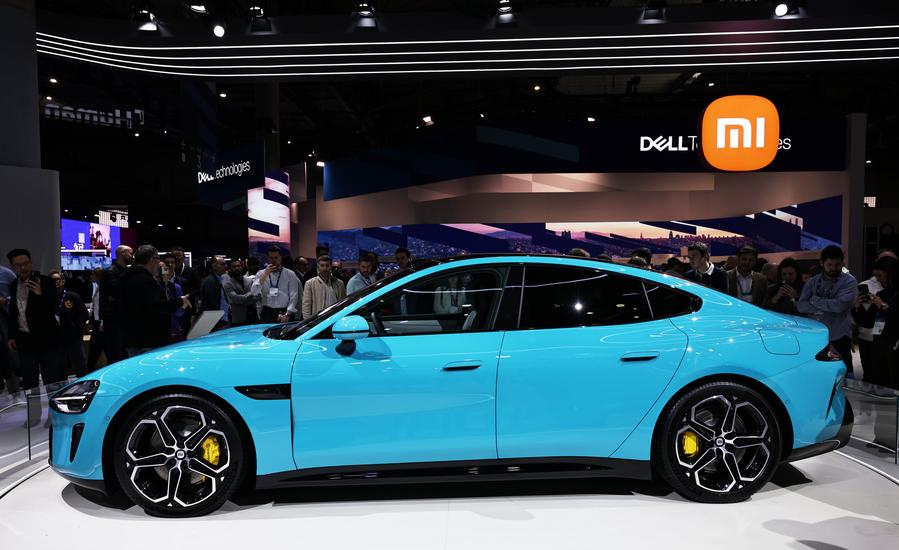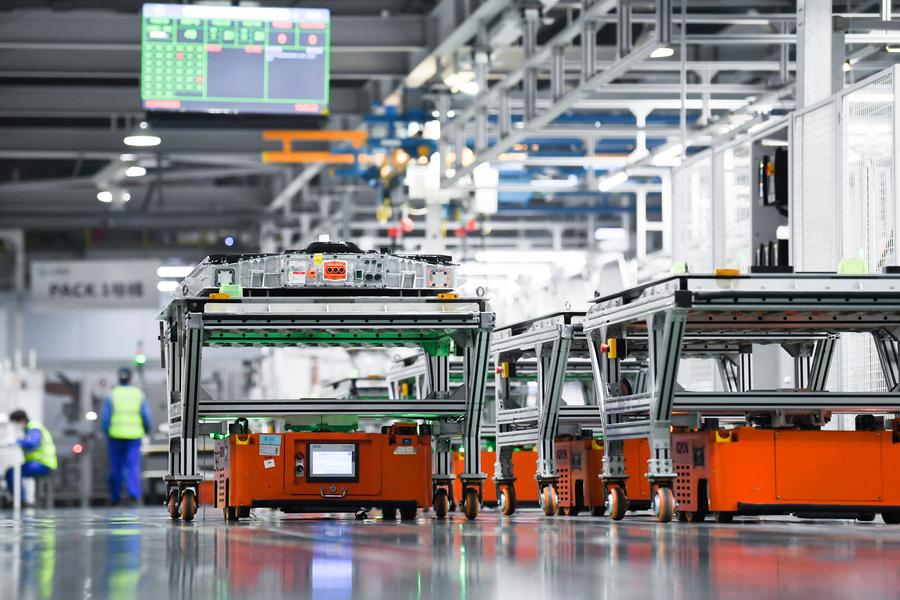Guest Opinion: China’s new quality productive forces: a force for good
Source: Xinhua
Editor: huaxia
2024-04-03 13:30:15

by Yi Xin
Improving urban air quality has been an ongoing effort for Nairobi, Kenya’s capital city. To contribute to this effort, entrepreneur Jit Bhattacharya started Kenya’s first electric bus company, BasiGo, to electrify Nairobi’s public transport, which accounts for 40 percent of trips made in the city and is a major contributor to air pollution.
BasiGo started its operation by importing two 25-seat buses from Chinese electric vehicle (EV) giant BYD in March 2022. Nowadays, more and more Chinese-made EVs have joined the fleet of BasiGo to offer reliable services to the Kenyan people while greatly mitigating their capital’s air quality problems.
Electric vehicles produced by Chinese carmakers are a symbol of China’s new quality productive forces, a buzzword during China’s annual “two sessions” this year. This relatively new concept highlights China’s consistent pursuit of high-quality development, one that puts the people front and center, prioritizes technological innovation and follows high environmental standards.
Under the consistent guidance of such a philosophy, China has passed one milestone after another in its successful development stories.

SCIENCE AND TECHNOLOGY: FROM FOLLOWER TO PACESETTER
In 2023, China saw its ranking in the Global Innovation Index (GII) compiled by the World Intellectual Property Organization jump from 34th in 2012 to 12th. In the same year, China also overtook the United States for the first time in the number of S&T clusters on the GII’s top 100 list.
Take China’s thriving EV industry as an example. According to Patent Result, a Tokyo-based analytics company, Chinese companies filed 41,011 patent applications related to EV charging and battery swapping from 2010 to 2022, leading the second-place country by more than 50 percent.
Large-scale technological innovation across the industry has provided a strong foundation for Chinese EV makers to offer faster and more convenient services to consumers.
CATL, the world’s largest battery maker, launched fast-charging batteries in 2023 to enable a driving range of 500 km with a charging time of just 12 minutes. NIO, dubbed as one of China’s EV-making “new forces,” can now complete automatic battery swap and electric system checks in two and a half minutes at its power swap stations nationwide before readying its cars to hit the road again.
Chinese EVs are not only better, but also significantly more affordable. JATO Dynamics, an automotive industry consulting company, reported that in 2023 the average retail price of an EV in China was less than half the price in Europe or the United States, allowing more Chinese customers to enjoy greater mobility at a considerably lower cost.
ENVIRONMENTAL PROTECTION: FROM GREEN TO GREENER
China’s development has become greener year by year. Investment in the clean energy sector in 2023 reached 890 billion U.S. dollars, almost as large as that year’s total global investments in fossil fuel supply.
Thanks to long-term strategic planning and relentless investment, China has emerged over the past few decades as the world’s leading player in solar power production, solar panel manufacturing and battery technology, making solar energy more affordable and accessible worldwide.
In 2023, clean energy sectors became the largest driver of China’s economic growth, contributing a record 11.4 trillion yuan (1.58 trillion U.S. dollars), or 40 percent, to its GDP expansion.

A FORCE FOR GOOD
By promoting new quality productive forces, a continuation of its vision for high-quality development, China has made development smarter and greener for not only itself but also the world at large.
A case in point is China’s fifth generation wireless technology, or 5G. Statistics of 2019 suggest that Chinese 5G products and solutions saved Europe 18 months and 55 billion euro (59.78 billion dollars) in their 5G network deployment, providing faster and more reliable connection to a wide range of smart applications at an earlier date and lower cost.
The availability of affordable and high-quality Chinese clean energy products ranging from EVs to solar panels can improve people’s living standards, and at the same time mitigate the negative consequences of the climate crisis by turbocharging global green and low-carbon transition.
Chinese President Xi Jinping once said that people’s well-being is the top priority of the Chinese government. In pursuing development, China believes that the people should be the ultimate beneficiary. Emphasis on high-quality development driven by new quality productive forces is yet another example of how China, as a force for good, has been delivering on this commitment with concrete actions.
Editor’s note: Yi Xin is a political observer based in Beijing.
The views expressed in this article are those of the author’s and do not necessarily reflect those of Xinhua News Agency.■












